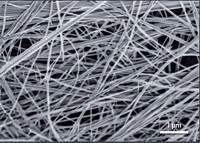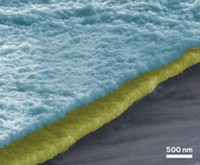Advertisement
Grab your lab coat. Let's get started
Welcome!
Welcome!
Create an account below to get 6 C&EN articles per month, receive newsletters and more - all free.
It seems this is your first time logging in online. Please enter the following information to continue.
As an ACS member you automatically get access to this site. All we need is few more details to create your reading experience.
Not you? Sign in with a different account.
Not you? Sign in with a different account.
ERROR 1
ERROR 1
ERROR 2
ERROR 2
ERROR 2
ERROR 2
ERROR 2
Password and Confirm password must match.
If you have an ACS member number, please enter it here so we can link this account to your membership. (optional)
ERROR 2
ACS values your privacy. By submitting your information, you are gaining access to C&EN and subscribing to our weekly newsletter. We use the information you provide to make your reading experience better, and we will never sell your data to third party members.
Environment
Battery Gets A Charge Out Of Waste Heat
Thermogalvanic processing has the potential to efficiently turn low-grade leftover industrial process heat into electricity
by Stephen K. Ritter
June 9, 2014
| A version of this story appeared in
Volume 92, Issue 23
Vast amounts of excess heat are generated by chemical, steelmaking, and power plants, leaving engineers scrambling for ways to harness the wasted energy and put it to work. Efforts have focused on thermoelectric devices that produce electricity by subjecting a solid-state material to a temperature difference of several hundred degrees. But such devices don’t work well when the excess heat is less than 100 °C. Researchers led by Gang Chen of Massachusetts Institute of Technology and Yi Cui of Stanford University have now found an alternative approach based on the thermogalvanic effect (Nat. Commun. 2014, DOI: 10.1038/ncomms4942). To begin, the researchers heated up an uncharged battery made from a copper hexacyanoferrate cathode and copper/copper(II) anode. While at the higher temperature, the battery was charged. Once fully charged, the battery was allowed to cool. Because the charging voltage is lower at high temperature than it is at low temperature, the battery delivered more electricity than was used to charge it. This concept was proposed in the 1950s, Chen says, but suitable electrode materials with low polarization and high charge capacity were not around at the time. Chen cautions that work is needed to improve the speed of battery charging and to ensure battery reliability over an extended period.





Join the conversation
Contact the reporter
Submit a Letter to the Editor for publication
Engage with us on Twitter